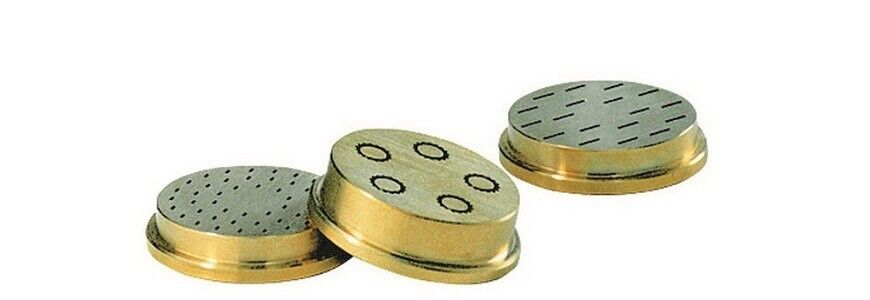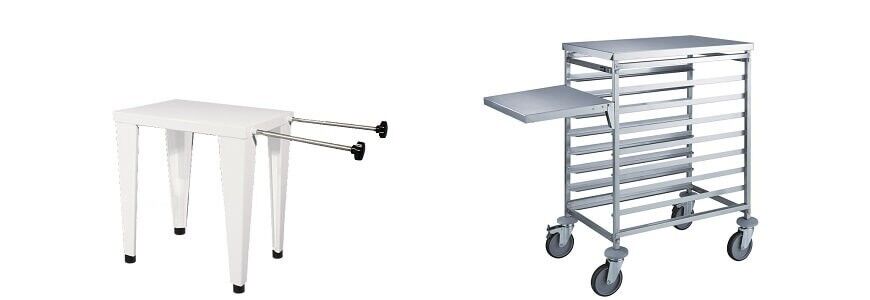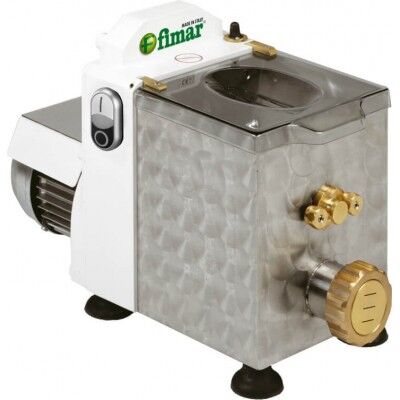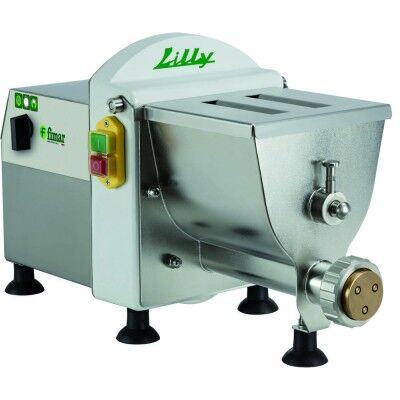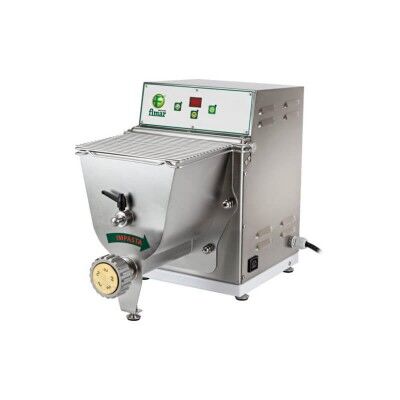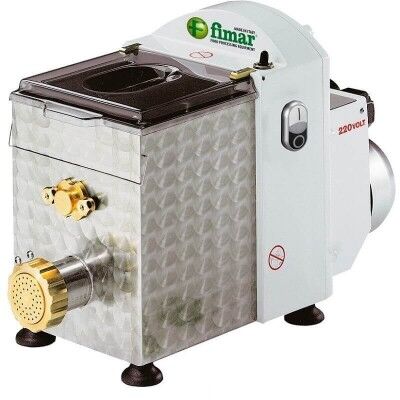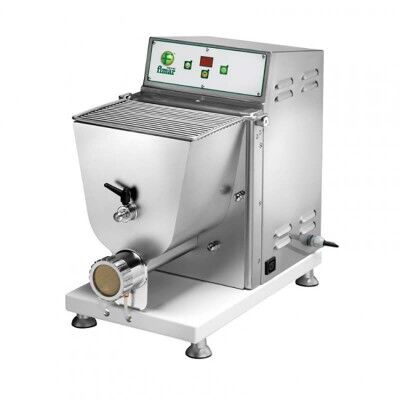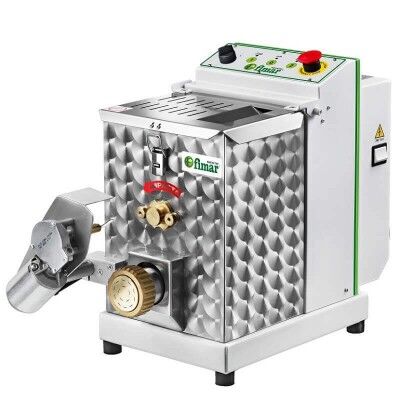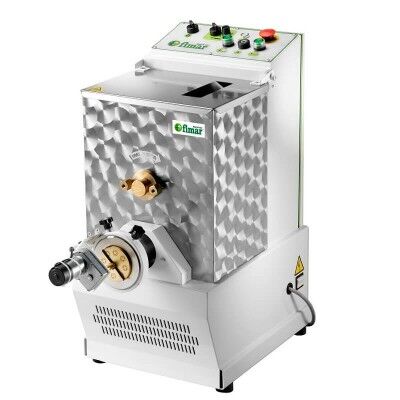Fresh Pasta Machines
Producing fresh pasta for restaurants requires specific and sophisticated equipment to ensure the quality and consistency of the final product. Fresh pasta machines are the cornerstone of this artisanal process, allowing producers to create a wide range of pasta shapes efficiently and precisely.
Dies for Fresh Pasta Production
Fresh pasta machines are distinguished by the various dies that enable the creation of different pasta shapes. These dies are essential for pasta extrusion, shaping it into specific forms like spaghetti, tagliatelle, fusilli, penne, and many others. They are made from high-quality materials like bronze, which can produce a rough pasta surface similar to that obtained with a traditional wooden rolling pin. This texture allows the sauce to adhere perfectly to the pasta, offering a superior culinary experience.
Extrusion of Fresh Pasta
During the extrusion process in fresh pasta production, a precise combination of high-quality ingredients and a series of technical steps define the pasta's consistency and quality.
The fundamental ingredients for producing fresh pasta include durum wheat semolina or soft wheat flour and water. Durum wheat semolina is particularly valued for its ability to create robust pasta with a characteristic golden color, while soft wheat flour offers a softer texture and a lighter shade. The precise combination of these ingredients is essential to achieve the right dough consistency and workability.
The extrusion process occurs through the use of a fresh pasta extruder equipped with specially shaped plates called dies. The dough, obtained by carefully mixing the ingredients, is pushed through the die by the machine. The dies, characterized by holes of different sizes and shapes, define the pasta's shape produced through extrusion.
The choice of die is crucial as it directly influences the pasta's texture, surface, shape, and ability to retain sauce. Bronze dies are particularly appreciated because they give the pasta a rough surface that allows the sauce to adhere optimally, ensuring an excellent tasting experience.
Careful control of pressure, speed, and dough consistency during extrusion is essential to ensure efficient production and high-quality pasta. This process requires the use of a professional pasta machine and precise knowledge of the variables that affect the consistency and shape of fresh pasta.
In conclusion, extrusion is a key and technical phase in fresh pasta production. The precise combination of high-quality ingredients and the use of professional pasta machines make it possible to produce a wide range of shapes with unique characteristics and superior quality, appreciated by the most demanding chefs.
Types of Fresh Pasta That Can Be Produced
The versatility of pasta machines allows the production of a wide variety of shapes. From classic tagliatelle to the elegance of spaghetti, including more elaborate shapes like pappardelle, fusilli, and bucatini. Thanks to the wide range of dies available on the market, these machines can meet the most diverse culinary needs.
Guide to Using a Fresh Pasta Machine
Preparing the Dough:
- Pour the flour into the tank and add the desired liquid.
- Run the machine for 8-10 minutes.
Resting Phase:
- Let the machine rest for a few seconds.
Pasta Extrusion:
- Position the machine for extrusion.
- Wait for the initial extrusion to clean the die.
Using the Electronic Knife (if available):
- Attach the knife and set the rotation speed.
Creating the Pasta:
- Extrude the dough from the tank using the desired dies.
Cleaning the Machine:
- Disassemble the various parts and proceed with thorough cleaning.
Storing the Die:
- Soak the die in water to prevent the dough from drying out.
Perfect Dough Measurements
Producing fresh pasta is an art that requires precise measurements of flour and liquids. Once the right consistency is achieved, the combination of flours becomes limitless. You can experiment with various types of flours: whole wheat, spelt, rice, buckwheat, corn, etc.
Here are a few examples:
- Classic Pasta:
1 kg of flour + 330-340 ml of warm water.
Recommended flour: durum wheat semolina or a blend of semolina and white flour "00". - Egg Pasta:
1 kg of flour + 350 ml of liquid from eggs and water.
Recommended flour: entirely durum wheat semolina or a blend of semolina and "00" flour.
Liquid: 6 whole eggs for a total of 350 ml. - Spelt Pasta:
1 kg of spelt flour.
With eggs: 7 whole eggs and the rest warm water to reach 350 ml of liquid.
Without eggs: 350 ml of warm water.
Tips for Cleaning the Dies
After use, remove compact dough residues from the dies with a knife and soak them in water. It is advisable to store them in the refrigerator. To maintain them, add a few drops of lemon or vinegar to the water. Avoid letting the dough dry inside the dies, as this could affect subsequent extrusions.
Cleaning the Sheet Die:
Remove the die screw to separate its two parts, allowing a bit of dough to come out. Excess residue can be placed back in the tank for reuse.
FAQ - Frequently Asked Questions
What types of pasta exist?
There are countless types of fresh pasta, each with its own unique shape and texture. Some of the most common include spaghetti, tagliatelle, penne, fusilli, bigoli, and bucatini. This wide variety offers endless options to create dishes suited to different tastes and recipes.
What pasta do top chefs use?
Top chefs usually prefer to use fresh pasta made by hand or with high-quality fresh pasta machines that allow for customization of the pasta's texture and shape. This enables them to create unique, high-quality dishes known for their freshness and attention to detail.
What is the best machine for making fresh pasta?
The choice of the best fresh pasta machine depends on specific production needs and personal preferences. Renowned brands like Fimar, Sirman, and Fama Industrie offer high-quality machines with multiple interchangeable dies, allowing for a wide variety of fresh pasta shapes.
What is the pasta-making machine called?
The pasta-making machine is known by various names, including "fresh pasta machine," "pasta maker," or simply "pasta extruder."
How much does a fresh pasta machine cost?
The cost of a fresh pasta machine varies based on brand, features, and model complexity. Smaller versions can start at affordable prices, while machines with higher production capacity can be more expensive. Generally, a professional fresh pasta machine starts at around 700 euros but can reach several thousand euros for larger versions.
What do you need to produce pasta?
To produce fresh pasta, you need quality ingredients like durum wheat semolina or soft wheat flour and water. Additionally, a professional machine equipped with high-quality bronze dies is essential.
I hope these insights help clarify the use of a fresh pasta machine! Let me know if you need further details or information.

